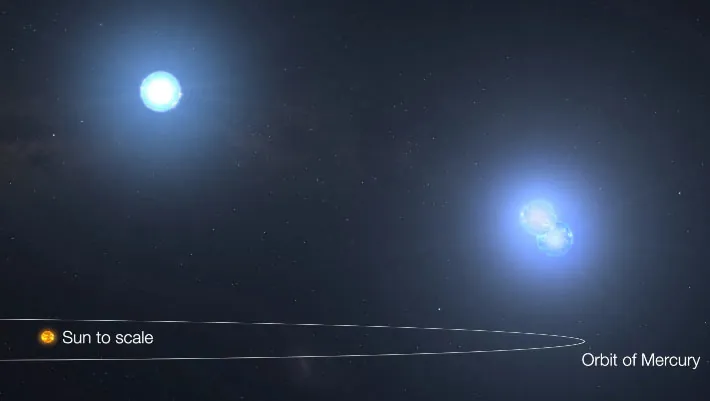
Record-Breaking Discovery: TESS Unveils a Triply-Eclipsing Triple Star System!
2024-10-02
Author: Ming
Introduction
In a remarkable find that has shaken the astronomical community, NASA's Transiting Exoplanet Survey Satellite (TESS) has discovered TIC 290061484, a triply-eclipsing triple star system that boasts the shortest known outer orbital period—just 24.5 days! This stunning revelation surpasses the long-standing record of 33 days held by Lambda Tauri since 1956.
Characteristics of TIC 290061484
TIC 290061484 consists of a compact inner pair of stars that orbit each other every 1.8 days, while a third star completes its orbit around this duo in a mere 25 days. This rare configuration enables astronomers to glean insights into the orbits, masses, sizes, and temperatures of these celestial bodies, thanks to their compact edge-on alignment.
Expert Insights
Dr. Veselin Kostov, an astronomer at NASA's Goddard Space Flight Center, expressed his enthusiasm: "We can study how the system formed and predict how it may evolve." Such compact hierarchical triples are particularly interesting, as they can exhibit spectacular dynamical interactions that are visible from Earth.
The Commonality of Double Stars
Double stars are common in our Milky Way galaxy, with estimates suggesting that over half of sun-like stars have at least one companion star, and many more have multiple companions. The neighboring star to our Sun, Proxima Centauri, is part of the well-known Alpha Centauri triple system, exemplifying the diversity of star formations.
Stability vs Dynamics
While long-period triple systems like Alpha Centauri are stable and interact over immense timescales—nearly 80 years for its inner binary—the newly discovered TIC 290061484 offers a window into the more dramatic behaviors of compact systems, where star interactions occur on much shorter timescales. These intriguing dynamics include potential mergers and even supernovae, predicted to unfold in approximately 20 to 40 million years as the inner stars age.
Role of Citizen Scientists
Even more thrilling is the involvement of citizen scientists who played a vital role in this discovery. Volunteers from the online citizen science project Planet Hunters actively participated in identifying interesting patterns in the data collected by TESS, showcasing the power of community collaboration in advancing scientific knowledge.
Future Prospects
"The signatures of compact multi-star systems are rare, but they are likely more abundant than we currently realize,” said MIT Professor Saul Rappaport. “We are actively on the lookout for even more enigmatic triple star configurations."
Conclusion
As we continue to unlock the mysteries of our universe, astronomers are eager to expand their insights into other star systems. The upcoming Nancy Grace Roman Space Telescope will provide unprecedented high-resolution views of the galactic center, shedding light on stars that until now were too blurred to study effectively.
This breakthrough discovery, detailed in the Astrophysical Journal, signifies an exciting new chapter in our understanding of the universe's complex stellar architectures. What other cosmic wonders lie hidden, waiting to be uncovered? The quest for knowledge in the vastness of space is far from over!

 Brasil (PT)
Brasil (PT)
 Canada (EN)
Canada (EN)
 Chile (ES)
Chile (ES)
 España (ES)
España (ES)
 France (FR)
France (FR)
 Hong Kong (EN)
Hong Kong (EN)
 Italia (IT)
Italia (IT)
 日本 (JA)
日本 (JA)
 Magyarország (HU)
Magyarország (HU)
 Norge (NO)
Norge (NO)
 Polska (PL)
Polska (PL)
 Schweiz (DE)
Schweiz (DE)
 Singapore (EN)
Singapore (EN)
 Sverige (SV)
Sverige (SV)
 Suomi (FI)
Suomi (FI)
 Türkiye (TR)
Türkiye (TR)